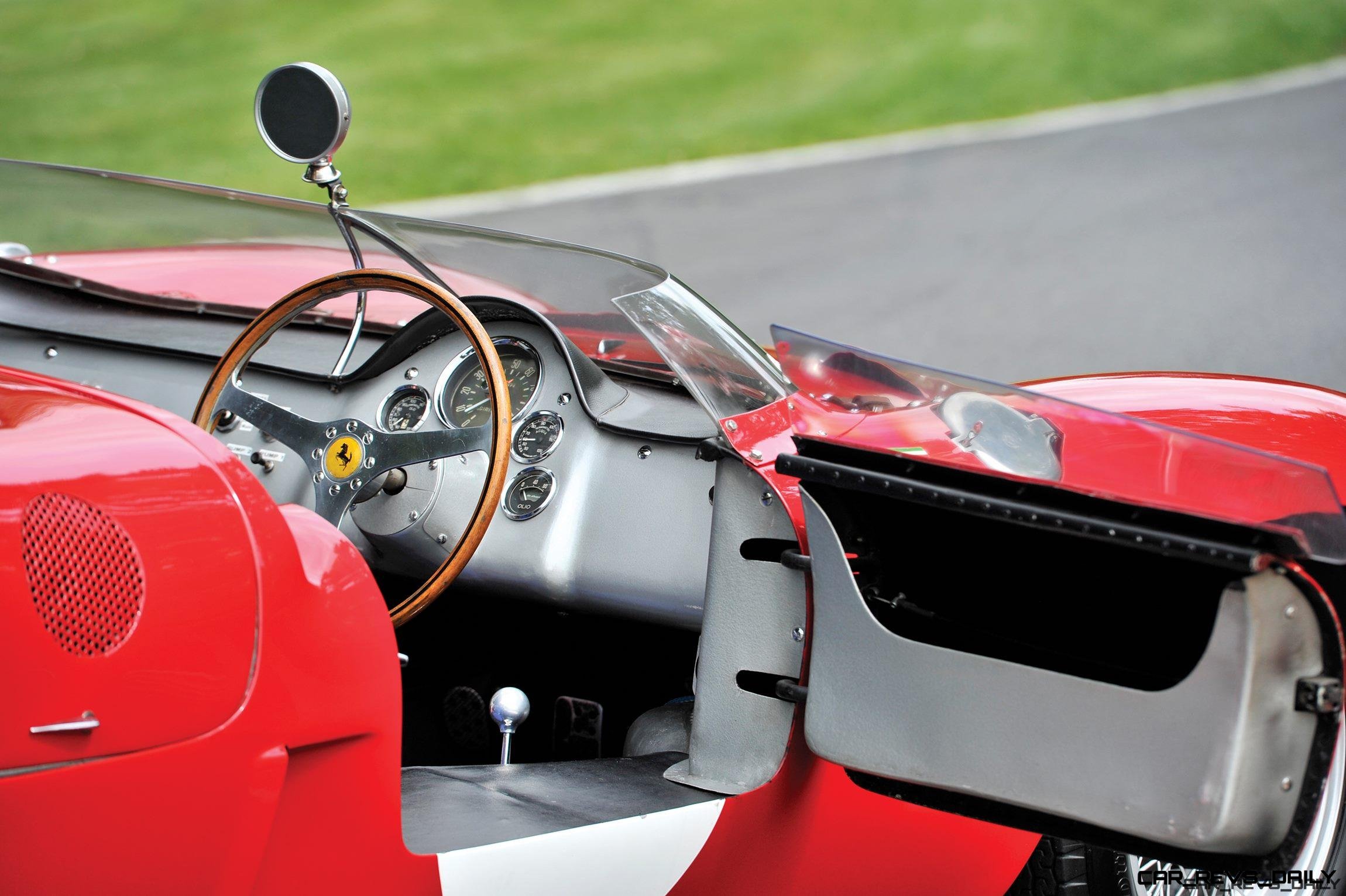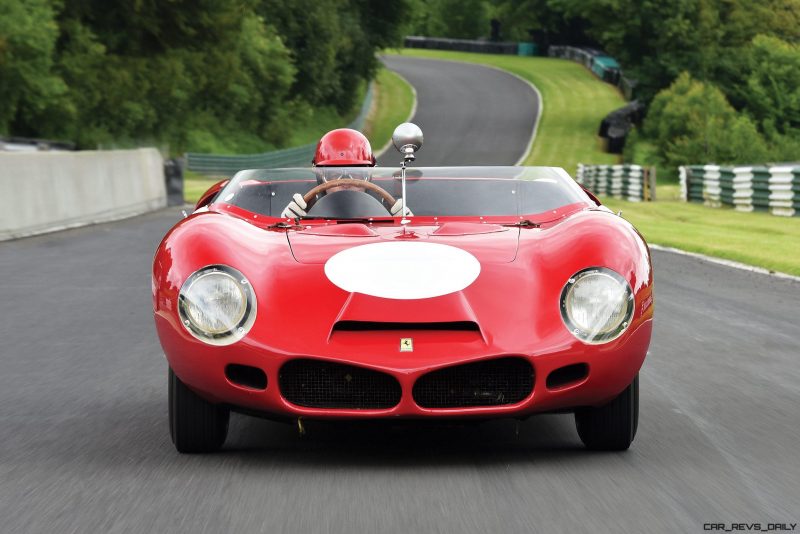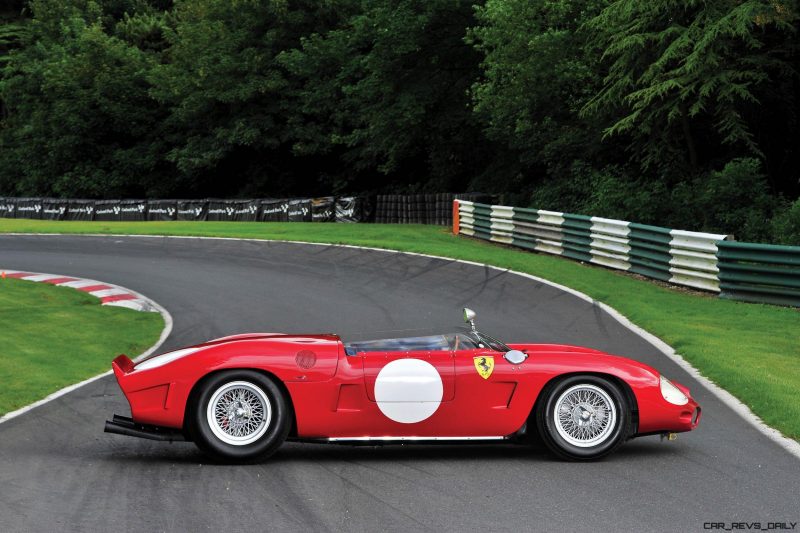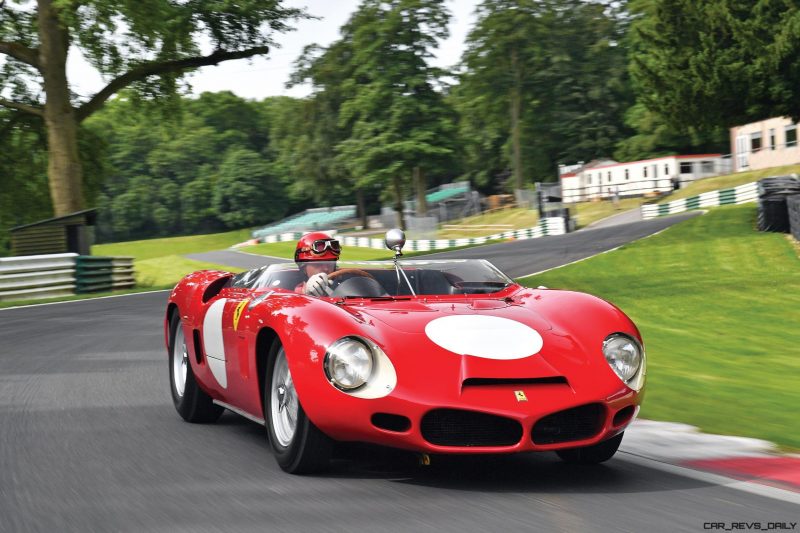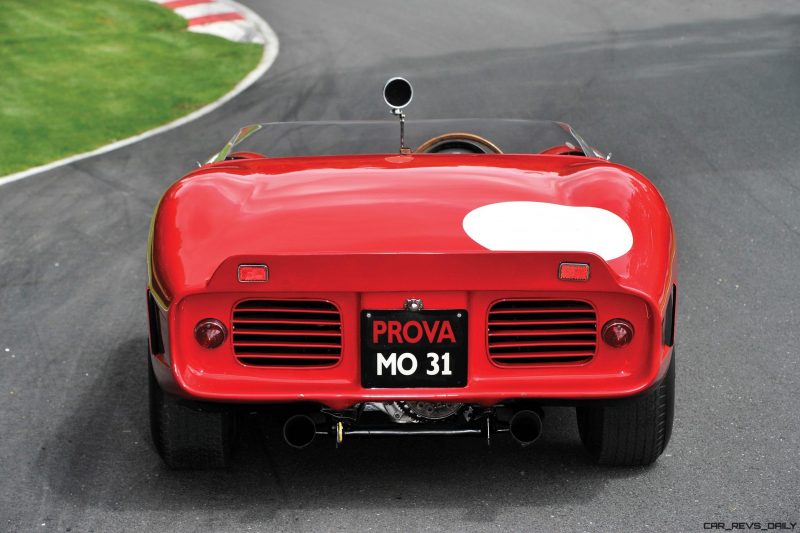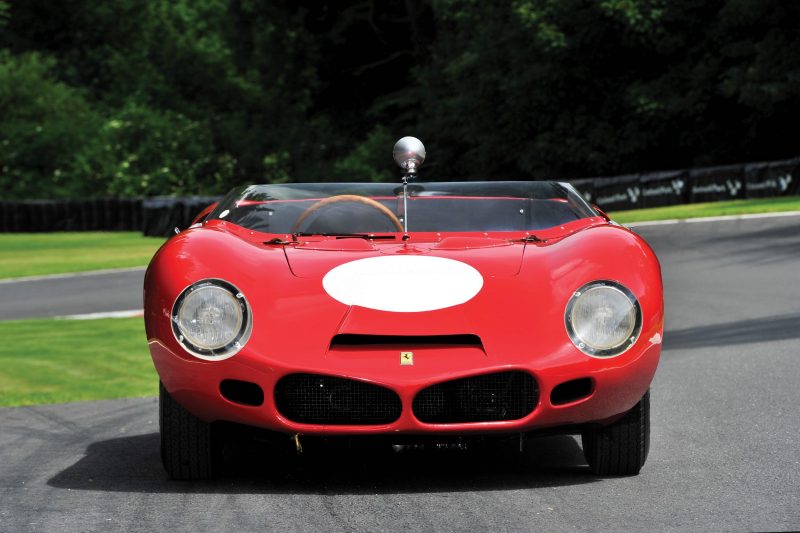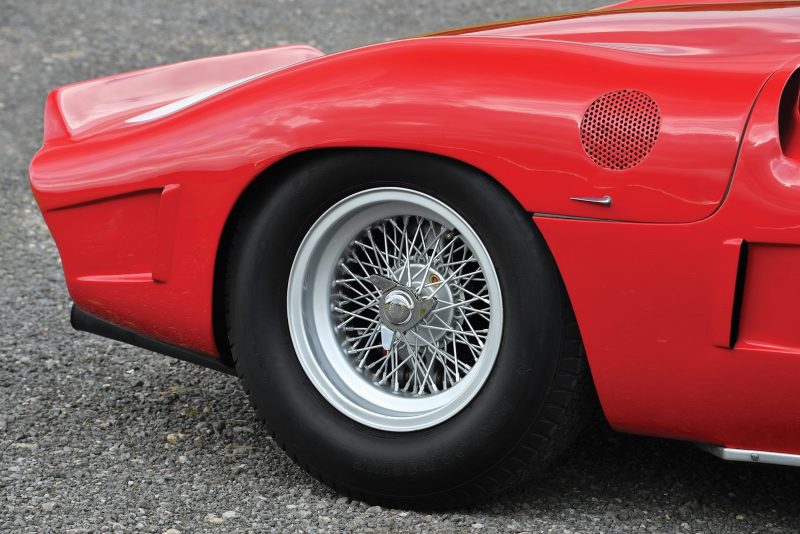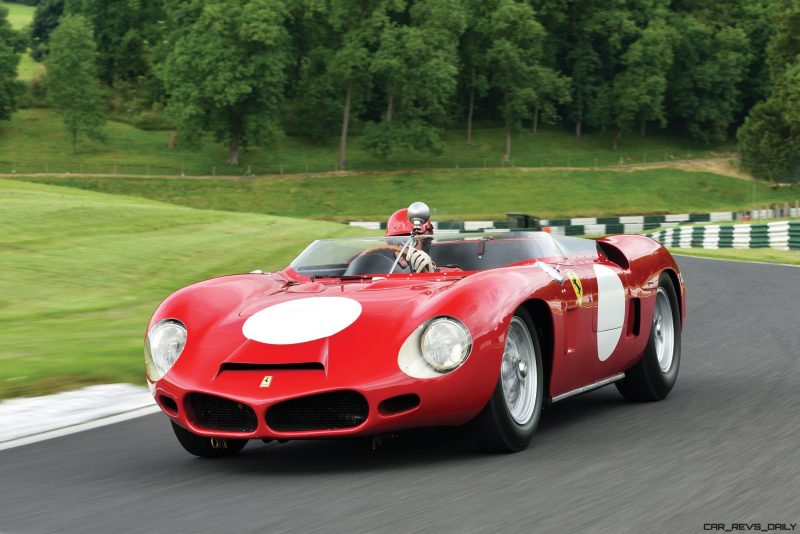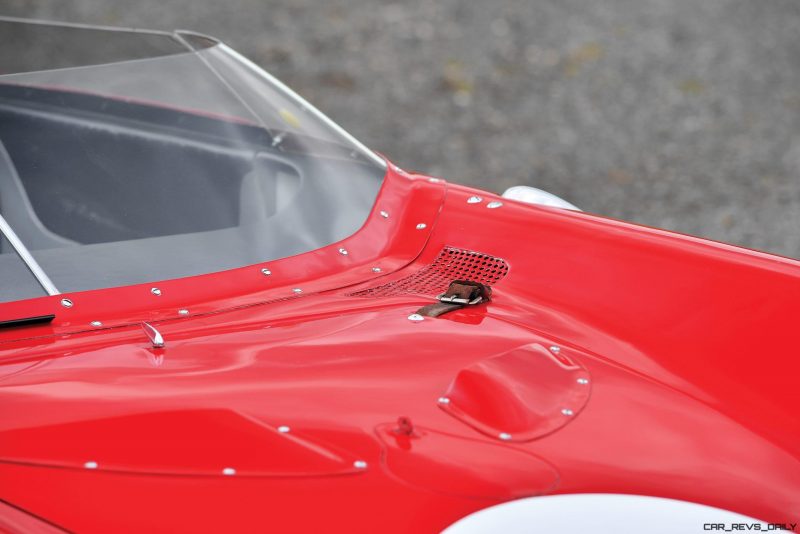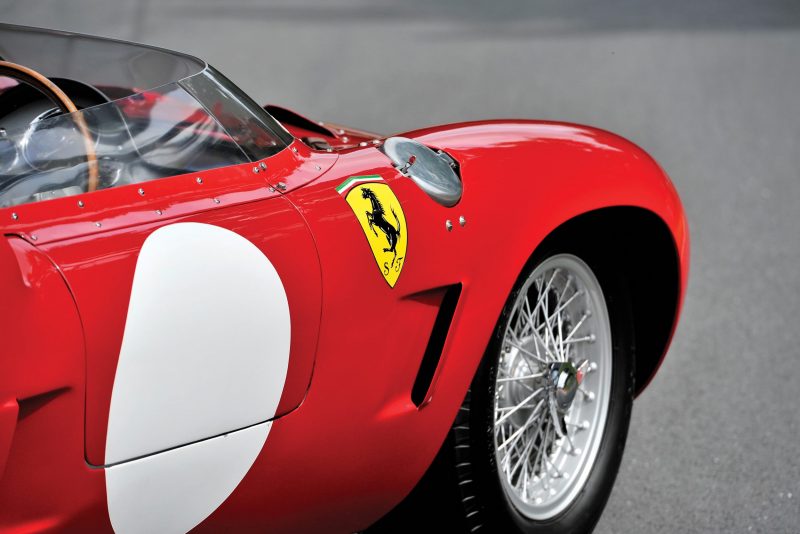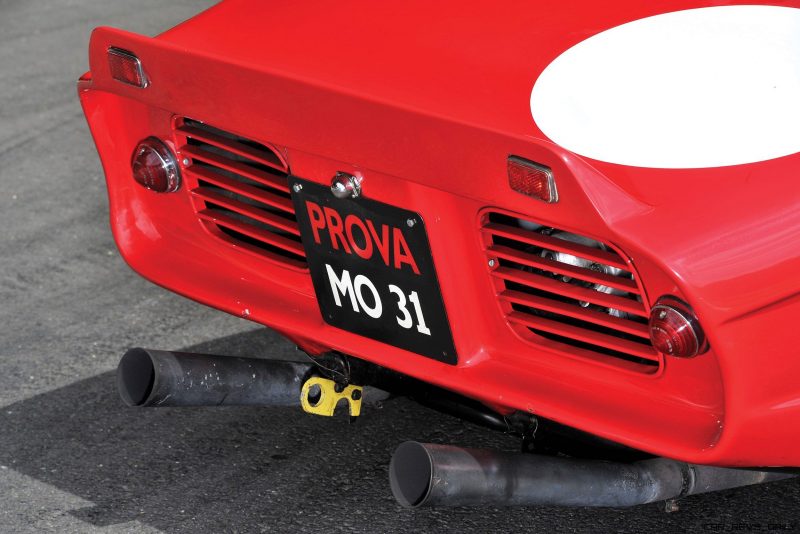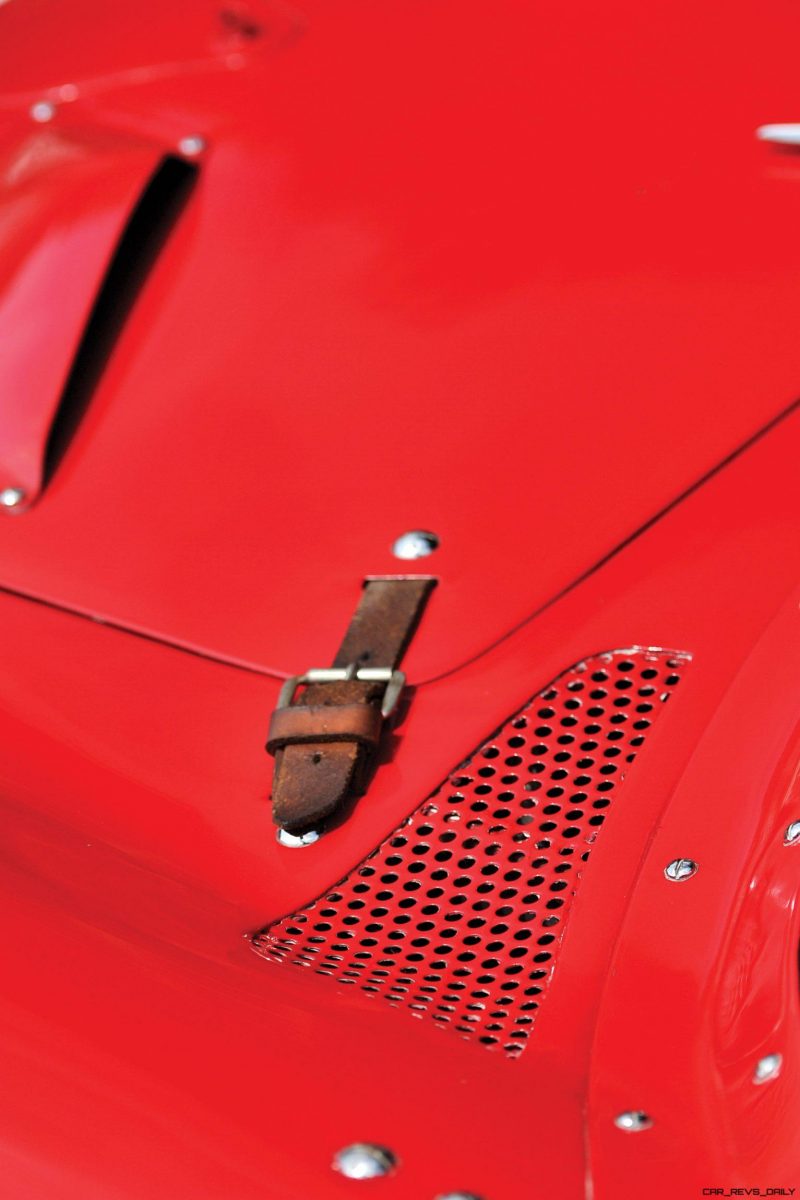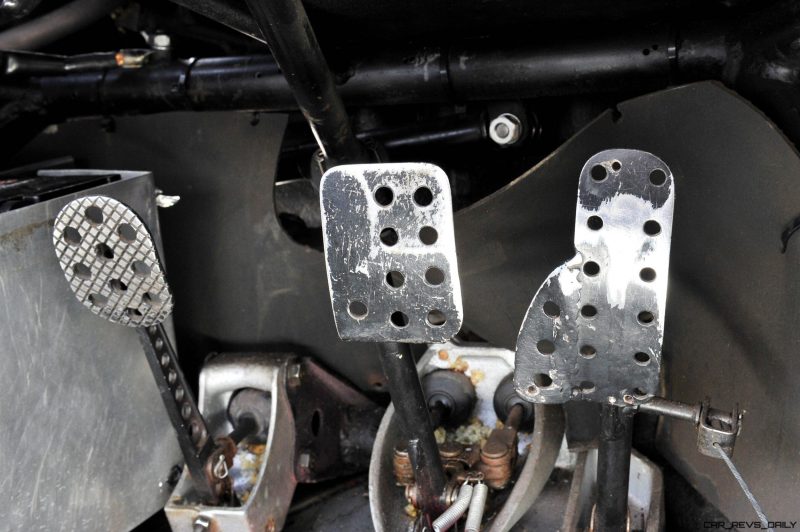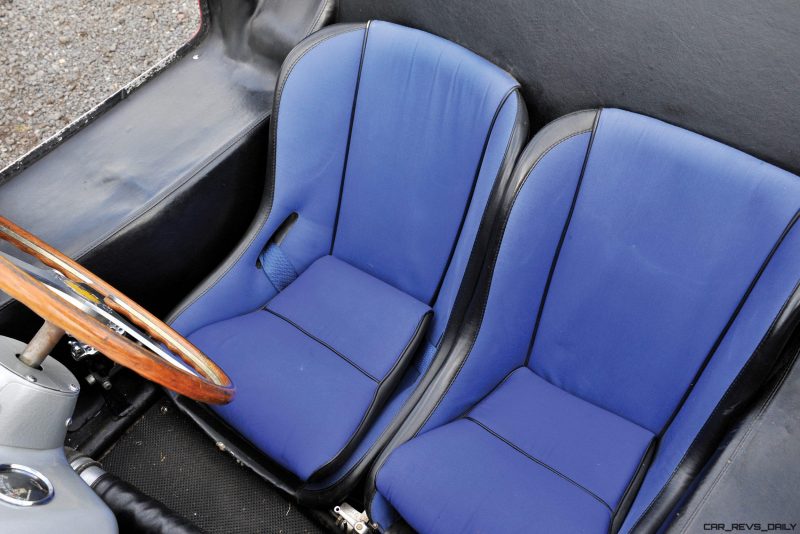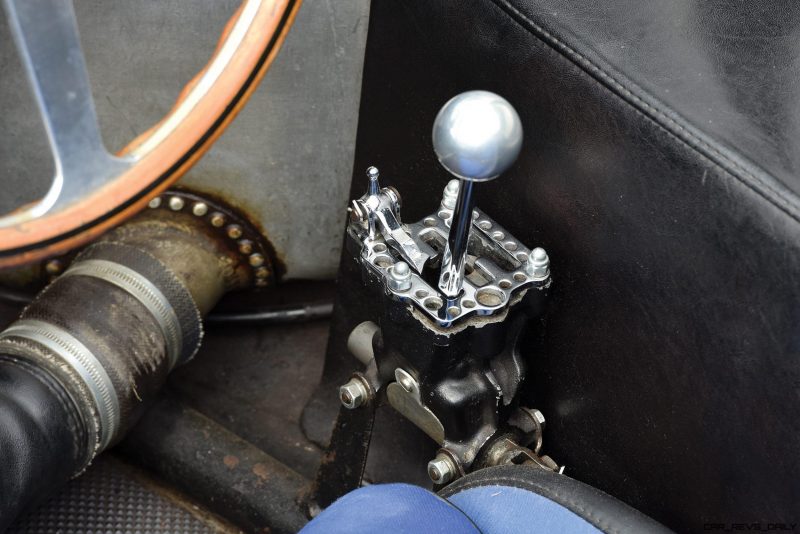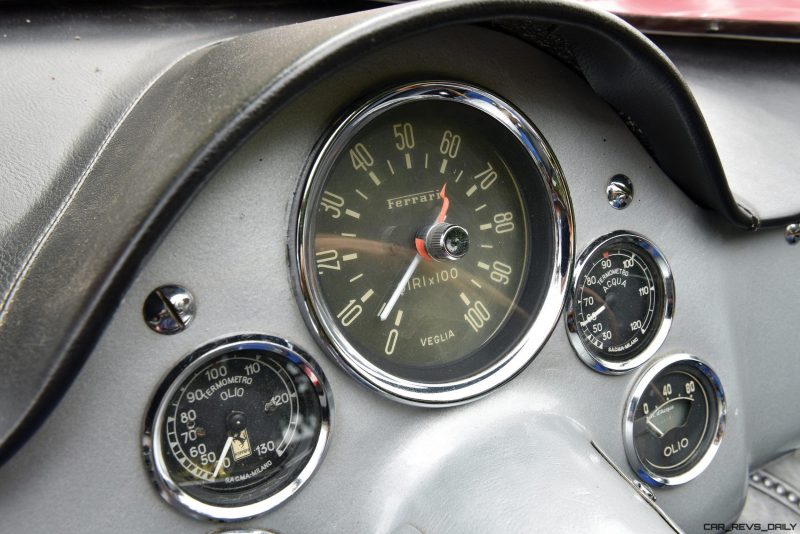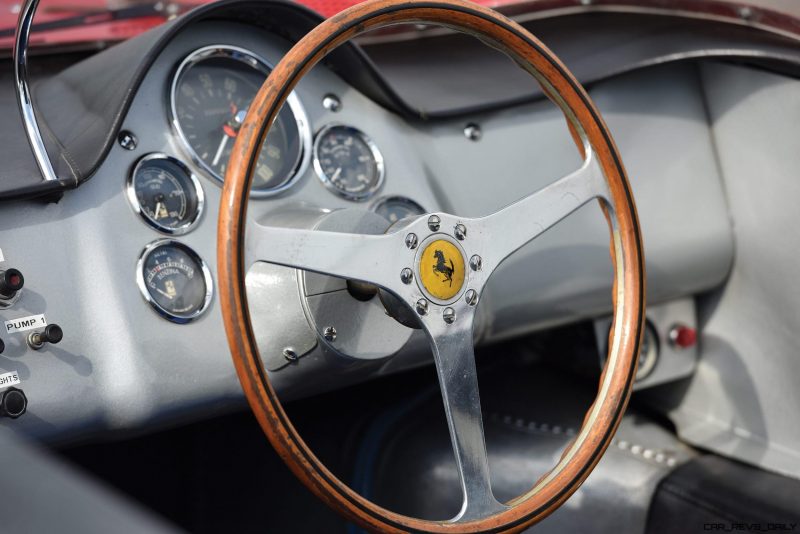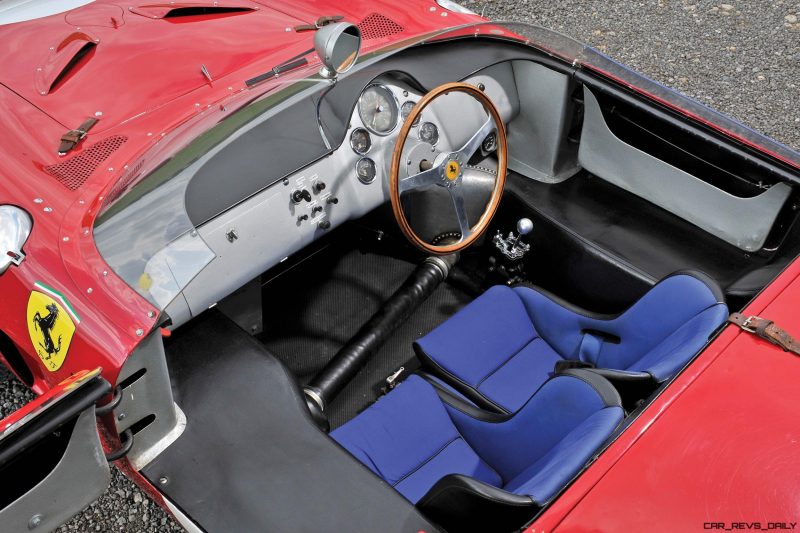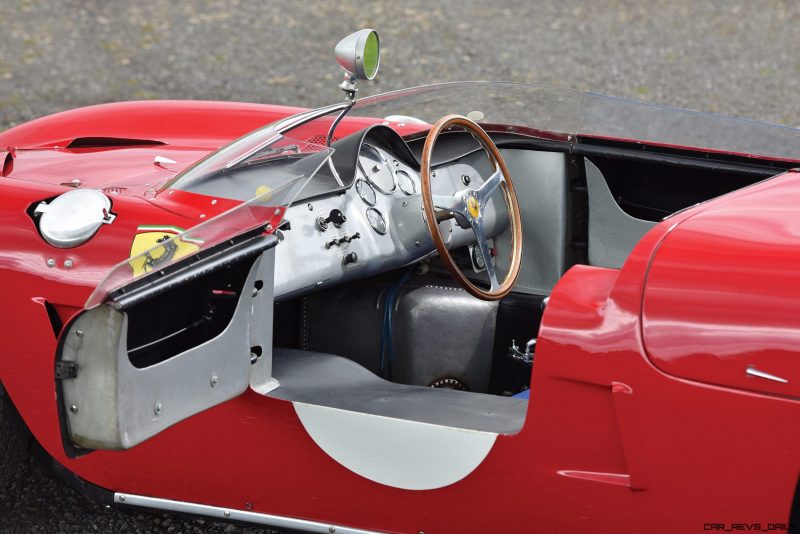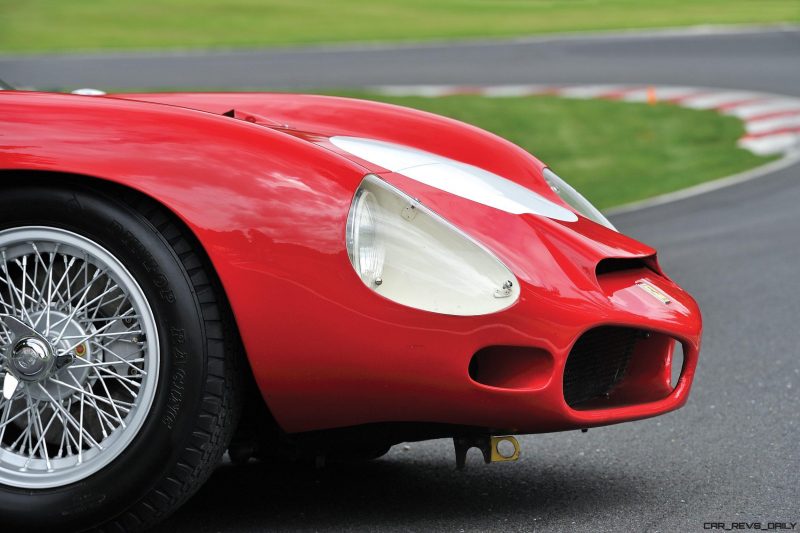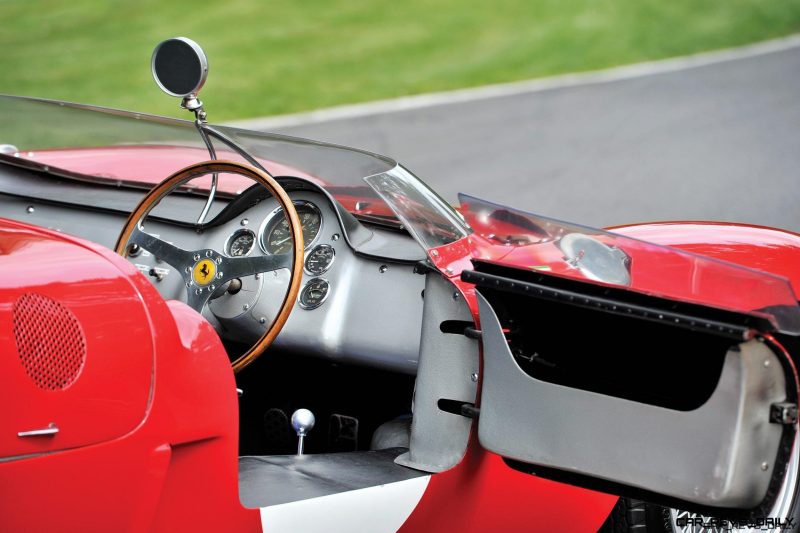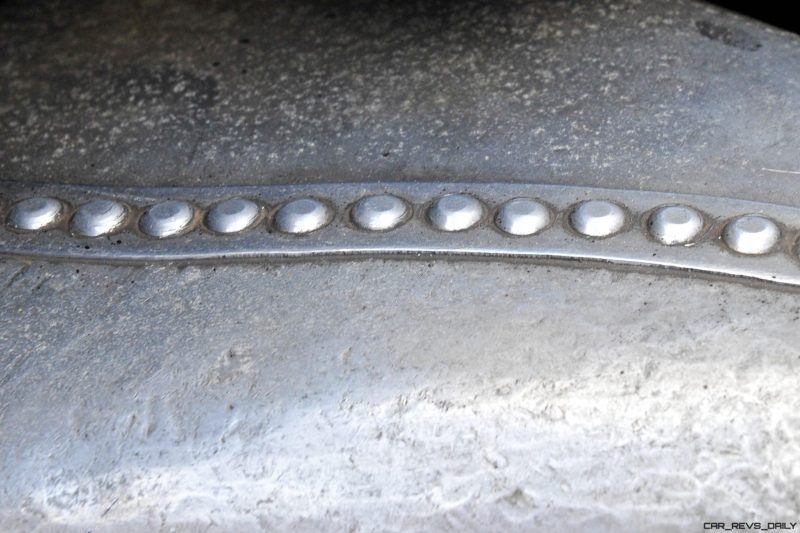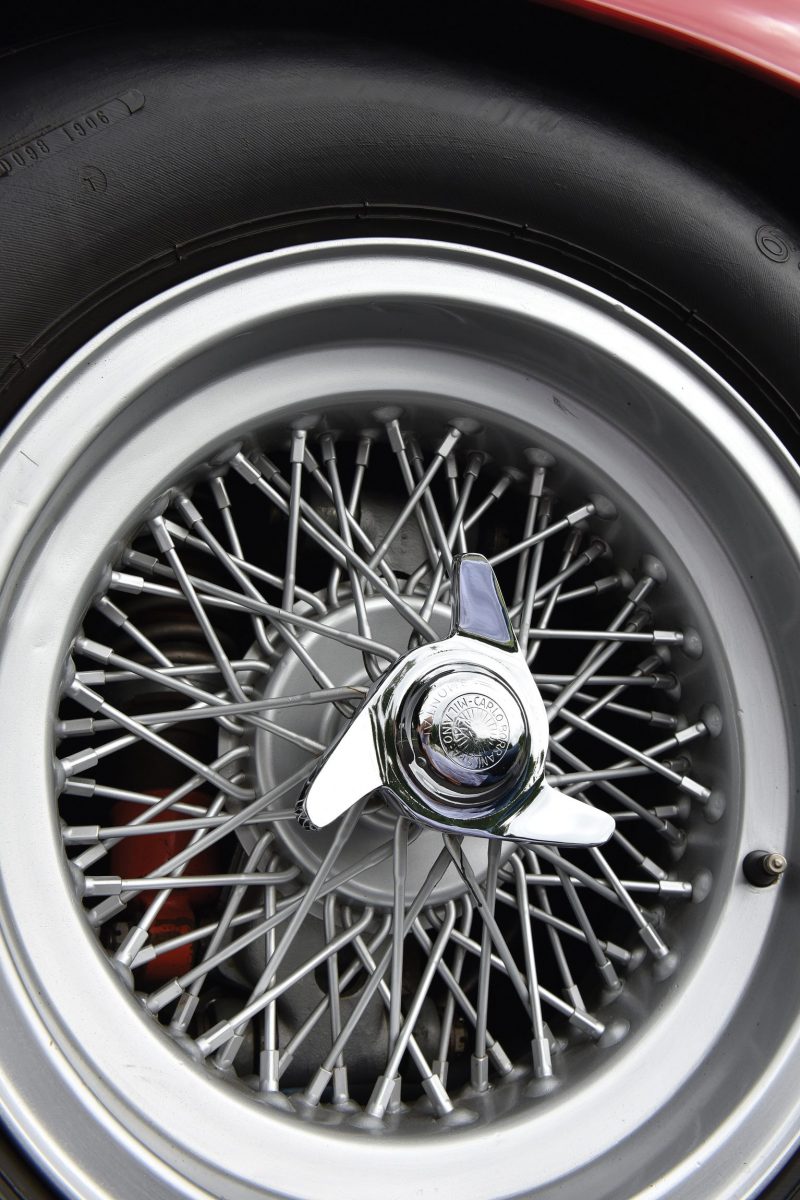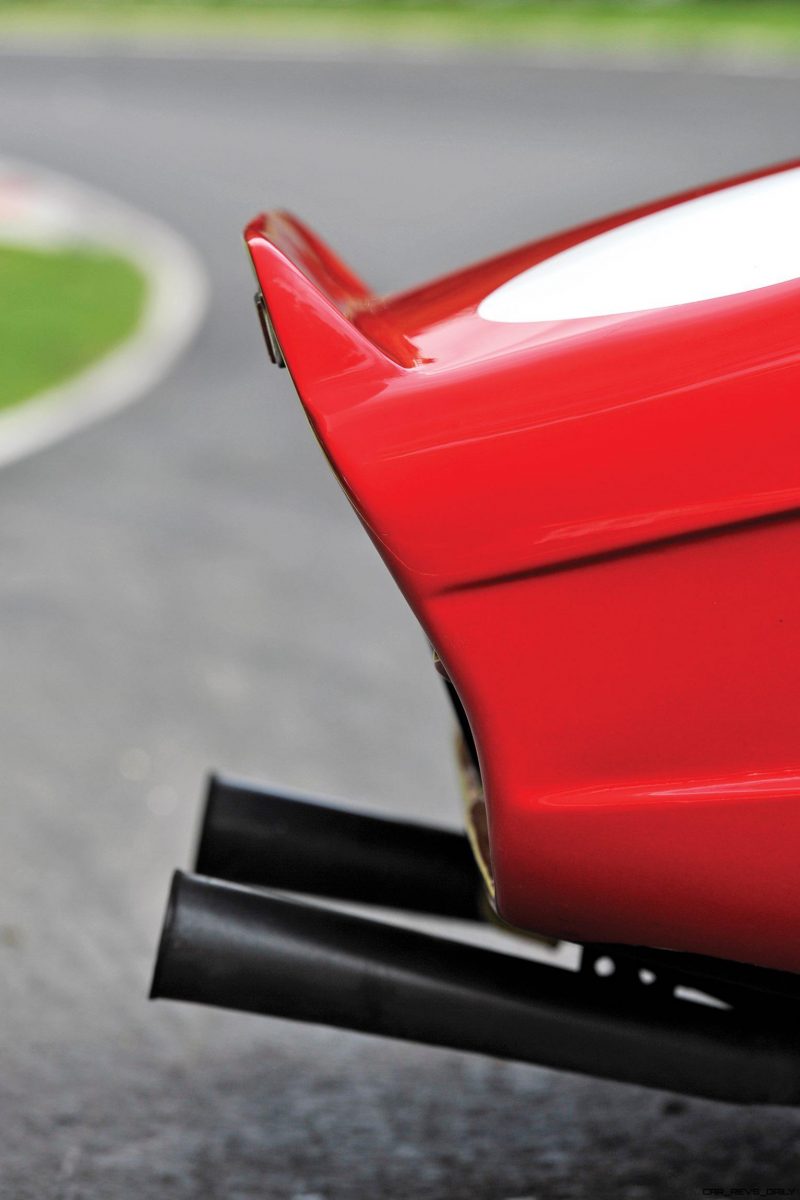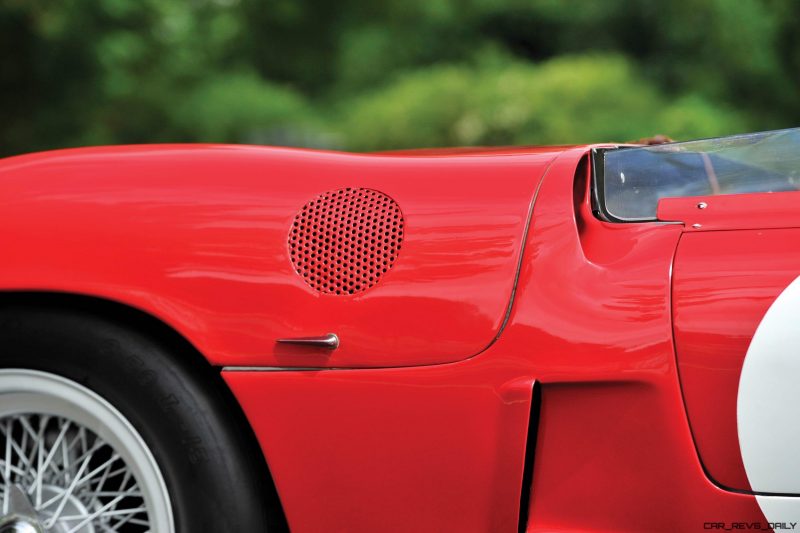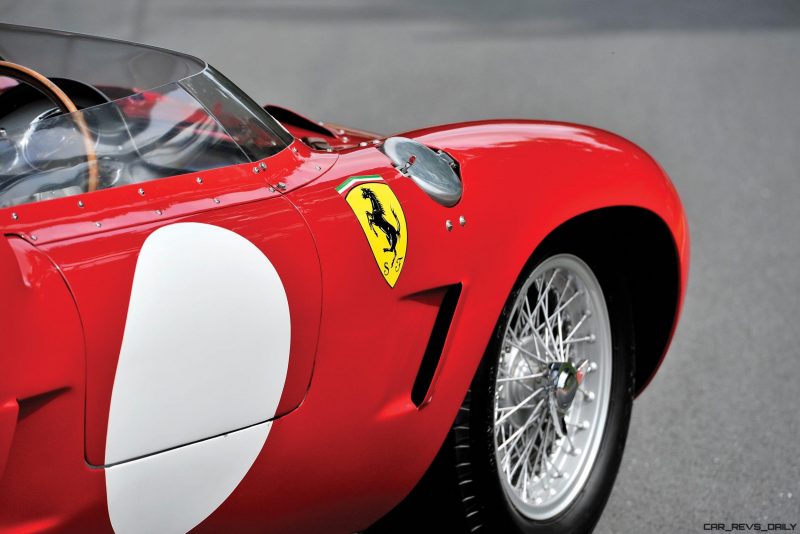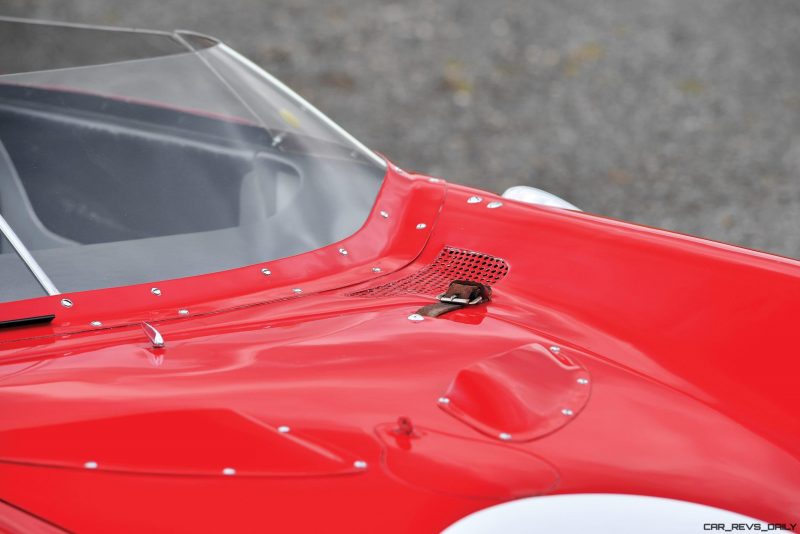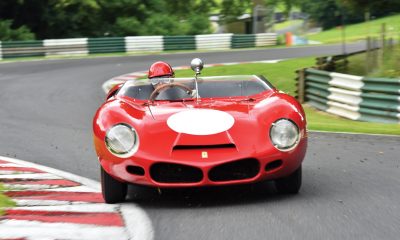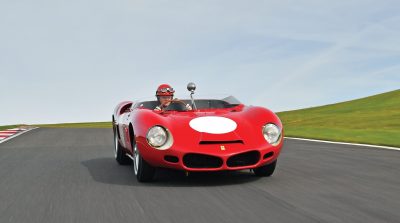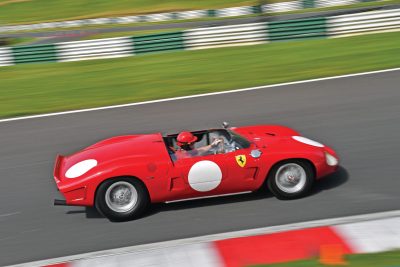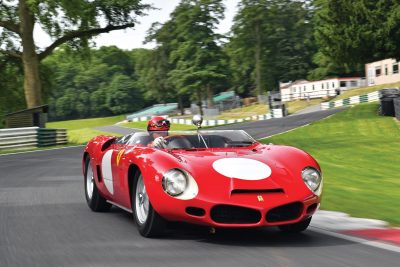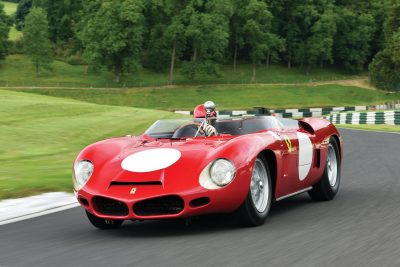One of the first-ever midengine Ferrari racers went across the block in Cali this August.
Looks like it was a no-sale, curiously.
A high bar was surely set: we’d estimating the reserve was around $25-million. Perhaps 35.
So it is still seeking a new home. Home for its freaky beauty, snarky nose intakes and special-prototype LMP1 provenance.
Sold or not, we’re elated to see this 1962 268SP in the sunlight in all its glory.
RM Sotheby’s Monterey 2016
Lot 240
1962 Ferrari 268 SP by Fantuzzi
- Chassis no. 0798
- Engine no. 0798
- Gearbox no. 6
Estimate Available Upon Request
265 bhp, 2,644 cc SOHC 90-degree V-8 engine with four Weber 40 IF2C carburetors, five-speed manual transaxle, front and rear independent suspension with unequal-length A-arms and coil springs, and four-wheel disc brakes. Wheelbase: 91.3 in.
- The third of only six examples produced; the test bed for mid-engine V-8 configuration
- One of two originally equipped with a rare Ferrari V-8; only four such engines built
- Integral to the evolution of the Ferrari P-car series
- Factory racing and development car for the 1962 season
- Scuderia Ferrari entry at the 1962 24 Hours of Le Mans
- Campaigned under the NART banner from late-1962 through 1963
- Driven to the 1964 SCCA Class D Modified Championship
- Formally of the Pierre Bardinon Mas du Clos Collection for 27 years
- Platinum winner at the 2001 Cavallino Classic
- Ferrari Classiche certified; no stories, matching-numbers example
- Held in single ownership for nearly two decades and never publically offered for sale
EVOLUTION OF THE FERRARI SPORTS PROTOTYPE
In 1960, following the lead taken by Cooper and Lotus, Ferrari began to experiment with rear engine placement in its Formula 1 and sports-racing cars. The dual overhead-cam V-6 motor co-engineered by Vittorio Jano and credited to the late Dino Ferrari was the powerplant of choice, and potential applications ranged from Grand Prix to sports car racing.
With displacement increased to 2.4 liters, the engine was dropped into two new sports cars, chassis numbers 0790 and 0796, which rode purpose-built Type 561 chassis based on the 156F1 Grand Prix car. The two cars were introduced to the public at Ferrari’s press conference in February 1961, marking the first appearance of the mighty Dino SP sports prototypes. These models not only proved to be very successful in competition, but they also paved the way for further applications of the Dino engine (including the popular Dino GT road car) and posited a design language that would reappear in several of Maranello’s most esteemed sports-racers.
As would eventually become the standard nomenclature practice for Ferrari’s junior cars, the SP model numbering did not denote individual cylinder displacement as in the V-12 models. Rather, the first two numbers denoted total displacement while the third number represented the number of cylinders. Thus, the 246 SP examples introduced in February 1961 were powered by a 2.4-liter V-6.
However, the most dramatic aspect of the SP was surely its breathtaking spider coachwork by Fantuzzi. A complete departure from prior Maranello styling, the new open design featured a low-rise windscreen, delicately curved rear fenders, and the innovative sharp spoiler at the edge of the tail that was actually suggested by American development driver Richie Ginther (0790 had originally been bodied with a vertical tail fin). These cues would become instrumental to seminal Ferrari racers like the 250 P and 330 P, and even influenced Scaglietti-built berlinettas like the 250 LM. Fantuzzi’s bodywork was punctuated with a protruding nose featuring a twin-nostril grille, similar to that of the Ferrari 156 Formula 1 driven by Phil Hill in the World Championship in 1961 (and later inspiration for the nose on the 360 Modena). Fantuzzi persuaded technical director Carlo Chiti that the design had aerodynamic benefits, which was soon confirmed in wind tunnel testing.
While the first two 246 SPs showed significant promise during the 1961 season, they also suffered their share of early retirements. Highlights included a 1st overall finish at the Targa Florio, and 3rd place at the Nürburgring 1000 KM. Encouraged by the promising results, Ferrari developed the SP into a broader range in 1962, which was epitomized by the manufacturer’s introductory press conference in February. Sitting side to side between the new 156 F1 car and the brand new 250 GTO (which did not yet have a spoiler), four SP examples featuring four different engines were presented.
In addition to the 246’s original 2.4-liter displacement, the line-up now featured smaller and larger versions of the Dino V-6 (respectively the 196 SP and the 286 SP), as well as a brand new, extremely unusual V-8. The so-called 248 SP featured a 2.4-liter engine that was essentially two-thirds of a 400 Superamerica V-12. This motor was initially used on just two cars: the one shown at the press conference, chassis number 0806, and the Ferrari presented here, chassis number 0798.
CHASSIS NUMBER 0798
This car is the third of six SP examples built, soon followed by chassis numbers 0802, 0804, and 0806. The 1962 cars featured minor bodywork revisions, as the FIA’s windscreen-height regulation had changed. With a cut windscreen, new technical director Mauro Forghieri correspondingly lowered the tail for an even sleeker profile.
The 2.4-liter V-8 unfortunately proved to be underwhelming in competition, with the best performance coming with a 13th place finish by chassis number 0806 at the 12 Hours of Sebring in March 1962. Displacement was therefore increased to 2.6 liters, and just four examples of this new Type 202 engine were reportedly produced, two of which were quickly installed into 0806 and 0798.
Now equipped as a 268 SP, chassis 0798 was integral to Ferrari’s testing at the Le Mans trials in April 1962, where it was put through the paces by team drivers Ricardo Rodriguez, Lorenzo Bandini, Mike Parkes, Olivier Gendebien, and Willy Mairesse.
Technically, the car was modified with a rear-cockpit airfoil enclosure for potential aerodynamic improvement along the fast Mulsanne straight, and this may have been the first appearance of the bread-basket cowl enclosure later seen in the 250 P and 330 P. A central dual long-pipe exhaust and special glass-sectioned front window for improved vision were also added.
Despite the extensive tuning, 0798 retired early at Le Mans in June, with Giancarlo Baghetti and Ludovico Scarfotti experiencing clutch issues after 230 laps. Later in 1962, the Scuderia sold 0798 to Luigi Chinetti for use by his North American Racing Team (NART).
In December 1962, the 268 SP was entered by NART at the Bahamas Speed Weeks, and it captured 8th overall and 3rd in class at the Nassau Trophy Race, piloted by the great Bandini. Over the next few months, further bodywork alterations were undertaken, with the twin-nostril grille replaced by a single-vent configuration. The car was then entered at Sebring in March 1963, where it was piloted by John “Buck” Fulp and Team Meister Bräuser ace Harry Heuer to a 34th overall finish, and 8th in class. Bandini assumed driving duties again at the Canadian Grand Prix in September, though the car would retire early.
During this period, the 268 was sold to Buck Fulp, though he continued to largely campaign the car on behalf of NART. A very successful race record soon shaped up, starting with the 1963 Bahamas Speed Weeks, where the SP finished 5th overall and 2nd in class at the Governor’s Trophy Race, and 11th overall with 2nd in class at the Nassau Trophy Race, both times driven by Fulp.
In January 1964, 0798 was purchased by privateer Tom O’Brien of Patterson, New Jersey, in a partial exchange for chassis number 0776, a front-engine 196 S. O’Brien and his brother Jim raced the 268 SP frequently in East Coast SCCA events, finishing 2nd overall and 1st in class at Marlboro in April 1964, and 1st overall at Cumberland in May. This was followed by another 1st overall finish at Bridgehampton in May, and three strong finishes at Lime Rock, a 5th place in August, 2nd place in October, and another 1st overall one week later. The strength of these performances propelled Tom O’Brien to the 1964 SCCA Class D Modified Championship.
In 1965, O’Brien sold the car to one of his employees, Robert Hutchins of New York. His race record was less successful, with several retirements over the course of 1965 and 1966 that included two engine failures. Luigi Chinetti was retained to rebuild the original motor, and the car was eventually traded back to him in July for a 275 GTB/C competition car.

Tom Burkart is the founder and managing editor of Car-Revs-Daily.com, an innovative and rapidly-expanding automotive news magazine.
He holds a Journalism JBA degree from the University of Wisconsin – Madison. Tom currently resides in Charleston, South Carolina with his two amazing dogs, Drake and Tank.
Mr. Burkart is available for all questions and concerns by email Tom(at)car-revs-daily.com.

